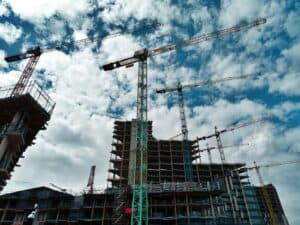What Are the Key Differences Between Traditional and Modular Construction?
The construction industry has evolved significantly over the years, with new methods emerging to enhance efficiency, cost-effectiveness, and sustainability. Two primary approaches dominate modern construction: traditional and modular. Understanding the key differences between these methods can help developers, architects, and homeowners make informed decisions about their building projects. From materials like plastic wall panels to timeframes and environmental impacts, let’s explore what sets these construction methods apart.
What Is Traditional Construction?
Traditional construction, also known as stick-built construction, is the most common method of building homes, commercial buildings, and infrastructure projects. This approach involves building structures on-site from the ground up using raw materials such as concrete, wood, steel, and bricks.
Characteristics of Traditional Construction:
-
On-Site Construction: All materials are transported to the construction site, and the building is assembled piece by piece.
-
Longer Timelines: The construction process is often lengthy due to weather dependencies, labor availability, and the need for various trades to complete their work sequentially.
-
Customizable Designs: Since construction happens on-site, architects and engineers can make adjustments as needed, offering greater flexibility in design.
-
Higher Labor Costs: Skilled workers are required at every stage of the process, which can drive up labor expenses.
-
Potential for Material Waste: The on-site nature of traditional construction often leads to excess material waste due to cutting and assembling components individually.
Traditional construction remains a preferred choice for projects that require high levels of customization, intricate architectural details, or unique site conditions that modular construction may not accommodate.
What Is Modular Construction?
Modular construction, also known as prefabricated construction, is an innovative approach that involves manufacturing building components in a controlled factory environment before transporting them to the site for assembly. These prefabricated modules are designed to fit together seamlessly, reducing on-site work and minimizing delays.
Characteristics of Modular Construction:
-
Off-Site Manufacturing: The majority of the structure is built in a factory setting, ensuring precise construction and minimal errors.
-
Faster Completion Times: Since modules are built simultaneously with site preparation, projects can be completed in a fraction of the time required for traditional builds.
-
Cost-Effective: Reduced labor costs, minimized material waste, and streamlined production contribute to lower overall costs.
-
Consistent Quality: Factory settings provide a controlled environment, ensuring uniform quality across all modules.
-
Eco-Friendly Approach: Modular construction generates less waste and often incorporates sustainable materials and energy-efficient designs.
This method is particularly advantageous for projects requiring rapid deployment, such as hospitals, schools, and temporary housing. It also works well for repeatable designs, such as apartment complexes or hotels.
How Do Materials Differ in These Methods?
Both construction methods utilize various materials, but modular construction often incorporates more lightweight, pre-engineered components that facilitate transportation and assembly.
Traditional Construction Materials:
-
Concrete and brick for durability and structural integrity.
-
Wood for framing and aesthetic elements.
-
Steel for high-rise buildings and industrial applications.
-
Drywall and plaster for interior walls.
Modular Construction Materials:
-
Lightweight steel and engineered wood for easier transportation.
-
Precast concrete panels for durability and rapid assembly.
-
Composite materials for improved insulation and efficiency.
-
Plastic wall panels for moisture resistance and easy maintenance in areas like hospitals, kitchens, and clean rooms.
Since modular construction emphasizes efficiency and transportability, materials must be durable yet lightweight enough to withstand the logistics of off-site manufacturing and delivery.
Which Method Is More Sustainable?
Sustainability is an increasing concern in the construction industry, and both methods have their advantages and drawbacks in this area.
Traditional Construction and Sustainability:
-
Higher material waste due to on-site cutting and fitting.
-
More energy consumption due to extended project timelines.
-
Increased carbon footprint from transporting raw materials separately.
Modular Construction and Sustainability:
-
Less material waste since modules are precisely manufactured in a factory.
-
Energy-efficient designs can be incorporated more effectively.
-
Reduced site disruption, leading to less environmental damage.
Modular construction often has a lower environmental impact because its controlled production process minimizes waste and optimizes material usage. Additionally, modular buildings can be disassembled and repurposed, extending their lifecycle.
Which Method Offers Greater Cost Savings?
Cost considerations are crucial for any construction project, and the method chosen can significantly impact the budget.
Traditional Construction Costs:
-
Higher labor costs due to the need for skilled workers on-site.
-
Potential delays from weather, labor shortages, or material supply issues.
-
Customization flexibility, which can add to overall expenses.
Modular Construction Costs:
-
Lower labor costs due to factory-based manufacturing.
-
Faster project completion reduces financing and overhead costs.
-
Bulk material purchasing lowers expenses.
While traditional construction allows for design modifications throughout the process, modular construction reduces financial uncertainties by streamlining production and minimizing on-site variables.
Conclusion: Which Method Is Right for Your Project?
Both traditional and modular construction methods offer distinct advantages, and the best choice depends on the project’s scope, budget, and timeline. Traditional construction provides flexibility and customization, making it ideal for unique or architecturally complex designs. On the other hand, modular construction excels in efficiency, sustainability, and cost-effectiveness, making it suitable for projects that require speed and uniformity.
For those looking for durable, easy-to-install materials that work for both methods, plastic wall panels offer an excellent solution for moisture-resistant, low-maintenance walls. Regardless of the construction method you choose, understanding these key differences will help you make an informed decision and achieve the best results for your project.


